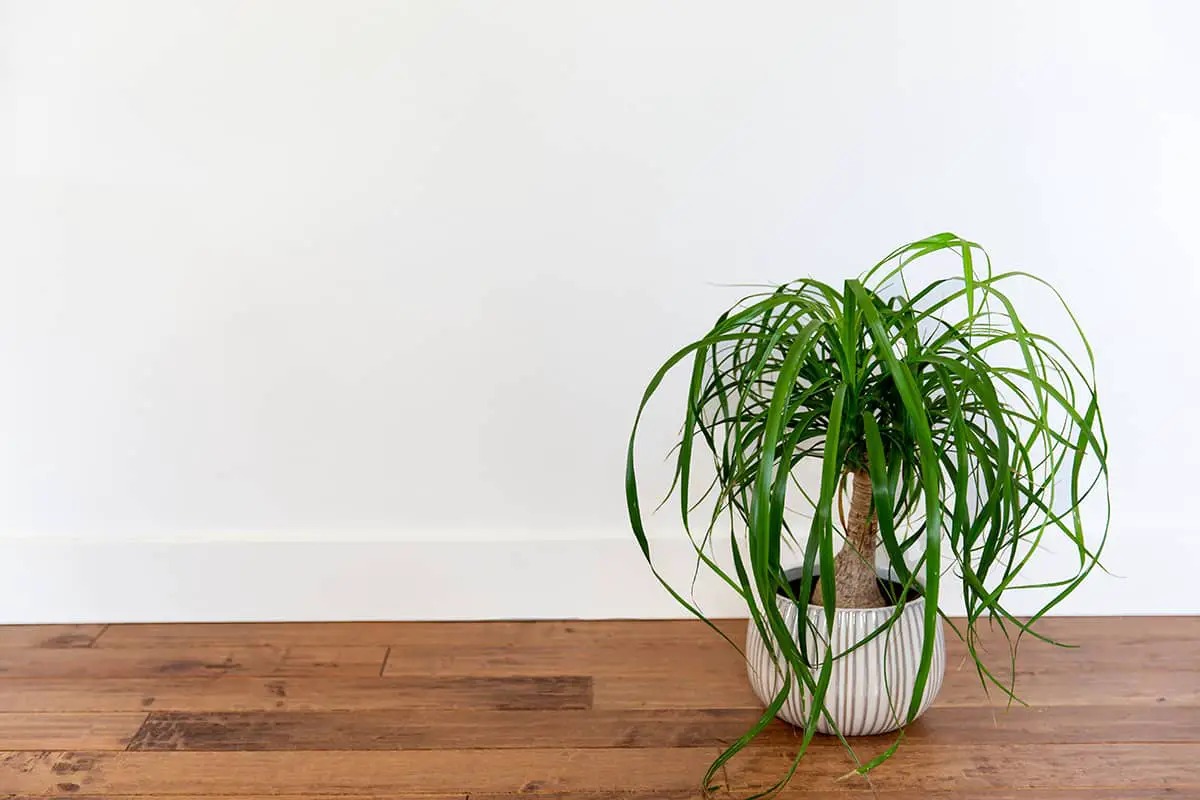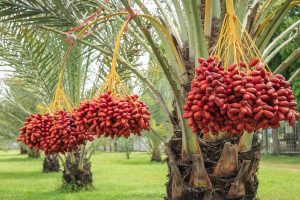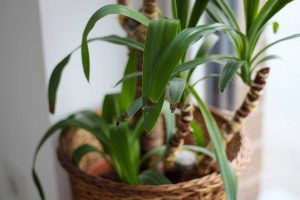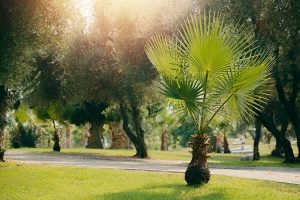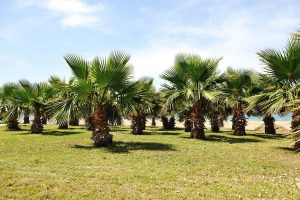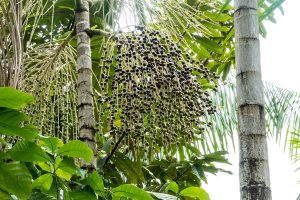Palm trees are synonymous with tropical landscapes and exotic, laidback vibes, so they can bring a lot of style to home decor, as well as help to create a fun environment in a backyard. There are over 2600 different species of palm trees, so you won’t be short of options when shopping for palms, but it’s important to find one that works well for your situation.
Many tropical palms require full sun and a generous amount of water, so these may not be ideal if your local climate doesn’t support this. However, there are also many low-maintenance species of palm that are easy to care for or those which will adapt well to a range of conditions. Here we take a look at some of the best low-maintenance palms for growing both indoors and outdoors.
Table of Contents
Easy to Grow Palm Trees
Palms that are easy to care for have several things in common, including adaptability to light exposure and uncomplicated watering requirements.
Parlor Palm
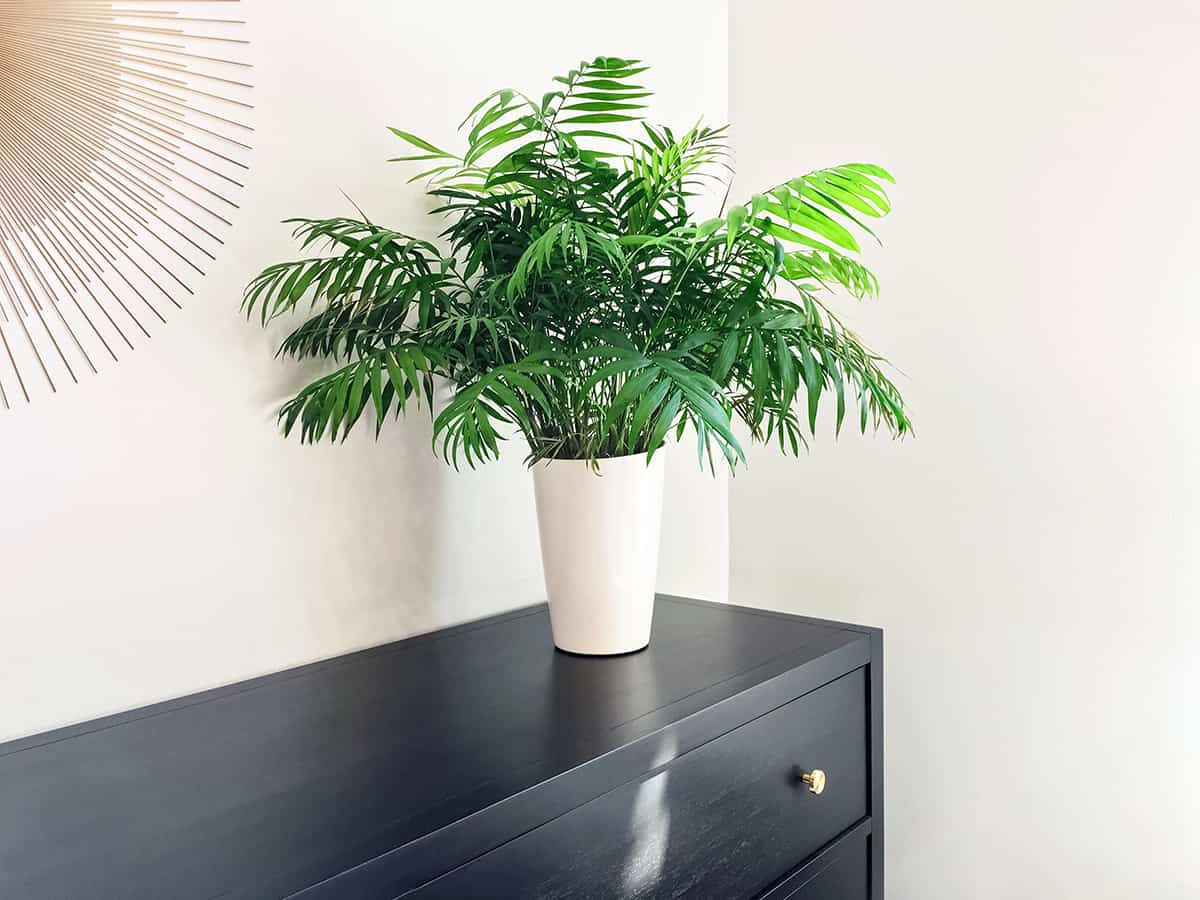
- Botanical name: Chamaedorea elegans
- Light: Bright indirect light to partial shade
- Water: Medium watering needs
- Humidity: High to moderate humidity
- USDA hardiness zones: 10- 12
This is one of the easiest care palms you can get, and it is widely sold as a houseplant because it fares so well in a range of conditions. If you are a newcomer to caring for plants, or this is your first type of palm, then the Parlor Palm is an ideal choice. It is tolerant to various lighting aspects, and it will even adapt to regular household humidity.
It also requires less water than your average palm, so it’s suitable for those among us who might forget to water often enough. You can position this palm in bright indirect light if you want it to thrive, but it will also perform well in a partially shaded area. The soil should be kept moist but not wet, and the top few inches can be allowed to dry out between waterings.
In terms of looks, the Parlor Palm is a typically tropical style palm with beautiful green arching fronds that elicit an exotic vibe in an indoor space. The Parlor Palm can also be grown outdoors if you live in an appropriate climate. When kept outside, you can expect this plant to reach heights of up to 16 feet, whereas as a houseplant, it will not exceed 6 feet.
It is a notoriously slow-growing plant which further adds to its low maintenance quality because it won’t need to be repotted very often, and you won’t need to relocate it due to outgrowing its current position.
Kentia Palm
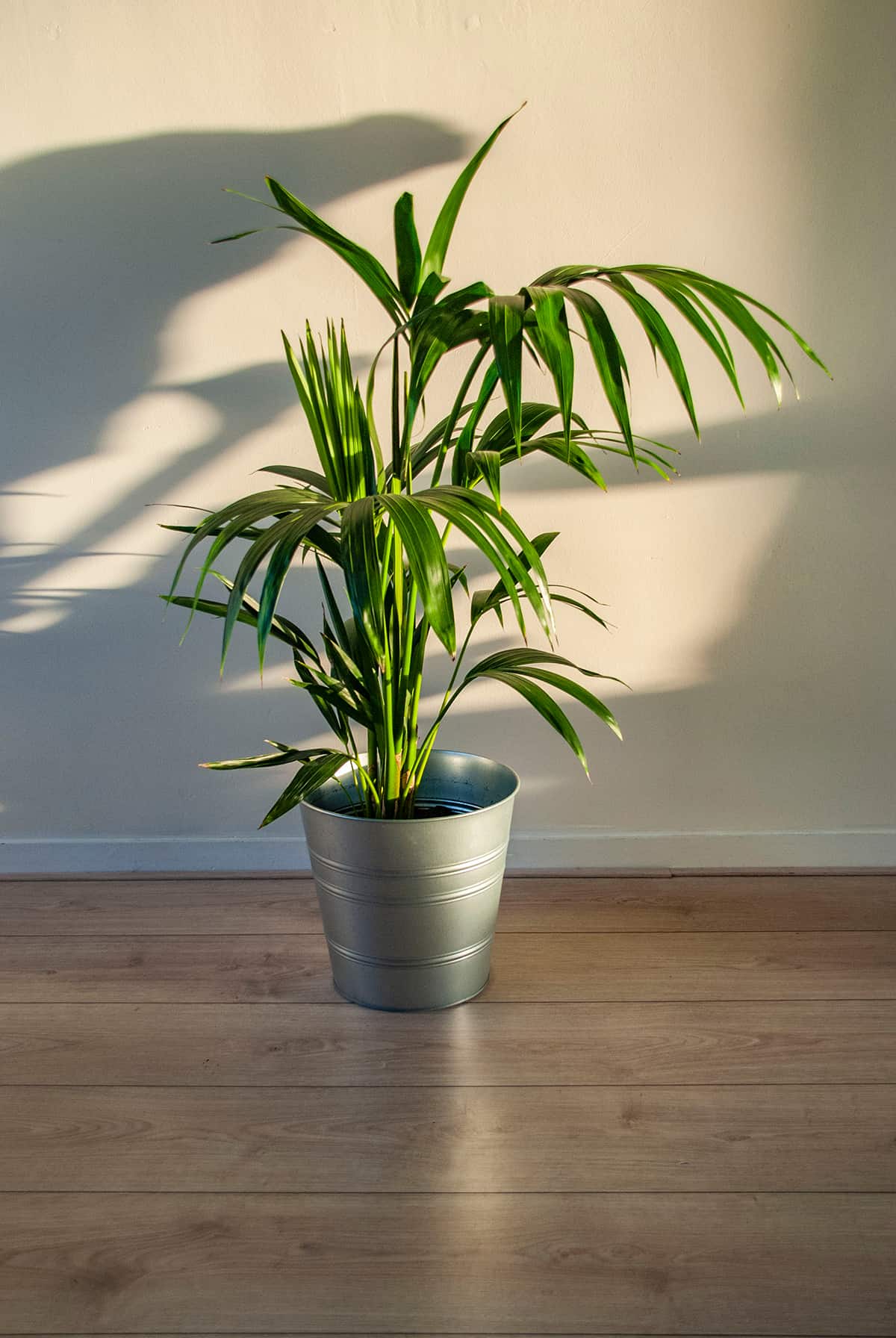
- Botanical name: Howea forsteriana
- Light: Partial shade
- Water: Medium watering needs
- Humidity: Average humidity
- USDA hardiness zones: 9- 11
The Kentia Palm is renowned for being one of the most low maintenance houseplants, making it a great option if you are looking for a palm that’s easy to care for. It hails from a tropical island in Australia, where it is accustomed to warm temperatures and moderate rainfall. When kept as a houseplant, the Kentia Palm fares best in partial shade or dark corners of the home.
It can tolerate bright indirect light once mature but should be kept out of these conditions when young to avoid the leaves getting scorched. This is a very slow-growing plant, and it doesn’t respond well to having its roots disturbed, so it will rarely if ever, need repotting. This further adds to its low maintenance quality. Kentia Palm trees are also low maintenance with regard to watering and humidity.
While they thrive in moist but not wet soil, they can also tolerate short periods of drought. They perform well in average household humidity, so you don’t need to work to increase humidity levels in the home. However, they can appreciate an occasional light misting from a water spray bottle.
The Kentia Palm produces large dark green fronds which fan out and create a gently arching shape. They add a quintessentially tropical look to any interior and can also be grown outside in suitable conditions. When kept as a houseplant, the Kentia Palm rarely exceeds 8 feet, though as an outdoor tree, it can reach heights of 40 feet. It is exceptionally slow growing, so it will take a long time to reach its potential height, typically gaining just one new frond each year.
Ponytail Palm

- Botanical name: Beaucarnea recurvata
- Light: Full sun to bright indirect light
- Water: Low water needs
- Humidity: Average humidity
- USDA hardiness zones: 9- 12
This plant is actually not a true palm at all, as it belongs to the Asparagaceae family rather than the Arecaceae family. It is widely mistaken for a palm, and its common name labels it as a palm because of its visual similarities with palm trees. It has a single trunk which is bulbous at the base, and it has a spray of fan-like foliage sprouting from the top.
The Ponytail Palm is native to Mexico, and it is actually a type of succulent. If you want a plant that gives you the look of a palm without any of the typical care requirements, then the Ponytail Palm is a great option. It is exceptionally easy to care for and actually thrives on neglect.
This plant thrives in full sun or bright indirect light, but it is also very adaptable and will tolerate a partially shaded position. The bulbous base of the trunk is where the plant stores its water reserves, so it doesn’t need to be watered very often at all. The soil should be allowed to dry out between each watering, and periods of drought can be tolerated. The Ponytail Palm is accustomed to growing in dry climates, so it doesn’t need high levels of humidity, and it works well as a houseplant because regular household humidity is ideal.
Chinese Fan Palm
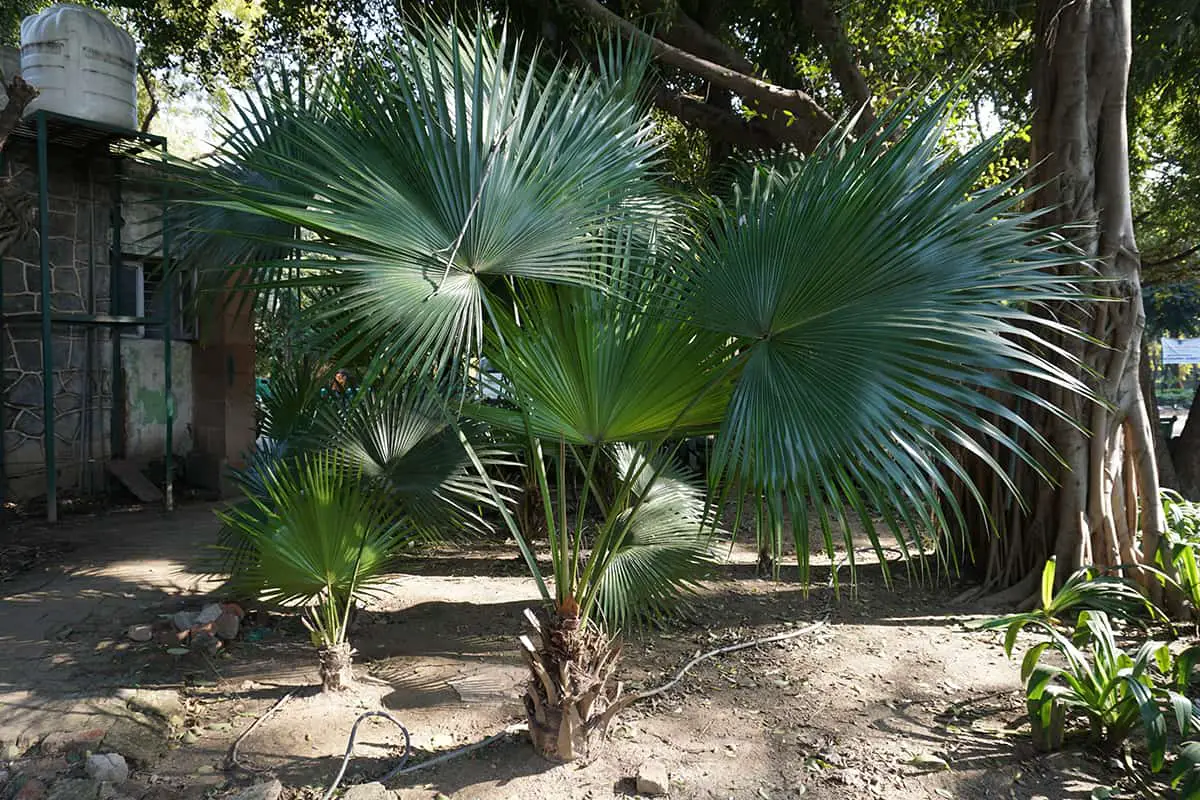
- Botanical name: Livistona chinensis
- Light: Full sun to partial shade
- Water: Medium water needs
- Humidity: Average to high humidity
- USDA hardiness zones: 9- 11
The Chinese Fan Palm, also commonly known as the Fountain Palm, is a great first palm if you are looking at growing palm trees in your garden. This is because they are very tolerant of a range of conditions, and they don’t need a lot of attention.
This makes them a low-maintenance palm tree and also means they are more likely to survive under the care of new gardeners. The Chinese Fan Palm is native to Asia and is colder tolerant than many other popular palm species. This means it can survive cold snaps without damage and is suitable for growing in hardiness zones 9 through 11.
It requires less water than tropical palms and thrives in soil that is kept slightly moist but not wet. It can survive through short periods of drought and should not be allowed to sit in waterlogged or soggy soil. The Chinese Fan Palm enjoys high levels of humidity, and its foliage will look its best when grown in moist conditions. If you grow this plant indoors, you can mist the leaves to improve humidity levels in your home or keep it in a humid room such as a bathroom or kitchen.
The Chinese Fan Palm is popular not only because it is low maintenance but also because it is a treat for the eyes. This visually striking palm produces almost star-shaped fronds that spread out in an open fan shape, with stiff leaves.
Bamboo Palm
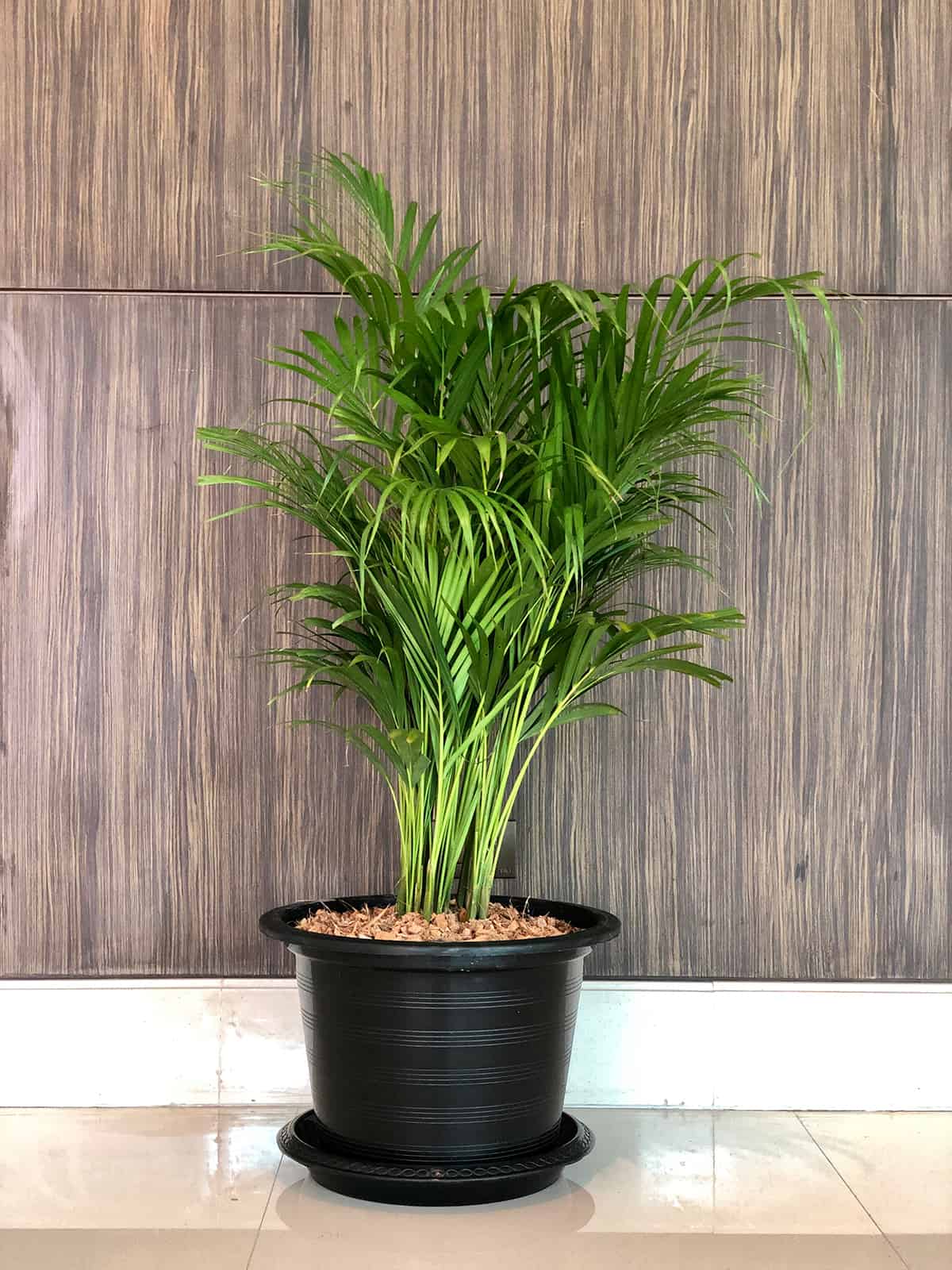
- Botanical name: Chamaedorea seifrizii
- Light: Partial shade
- Water: Medium water needs
- Humidity: Average to high humidity
- USDA hardiness zones: 10- 11
Bamboo palms are a true type of palm and are not a species of bamboo. However, they do resemble the look of bamboo plants which is where their common name comes from. These palms are native to Africa, growing in the understory of forests beneath the canopy of taller trees. As a result, they are tolerant of various lighting aspects, from shade to bright indirect light.
Avoid allowing direct sunlight to reach the Bamboo palm because this will cause the leaves to scorch. In terms of watering, this plant likes for its soil to be kept evenly moist. Its watering needs are the most tricky thing to get right, but even this is not difficult. They do not like to be overwatered or underwatered, so avoid making the soil soggy and waterlogged or allowing it to dry out.
Bamboo Palm plants thrive in high humidity, but they are also very forgiving when it comes to humidity levels, so the average humidity found in households will be fine if the palm is being grown as a houseplant.
The Bamboo Palm has a similar look to bamboo grass, with cane-like stems which produce sprays of fan-like fronds at the ends. As well as adding a tropical look to an area, this plant is also known to be excellent at filtering toxins from the air, as described in the NASA Clean Air Study.
